Why Hampta Pass is the Perfect First High-Altitude Trek for Beginners
Published on July 24, 2025
Hampta Pass Trek, a jewel in the crown of the Indian Himalayas, undoubtedly deserves a prime spot on any Indian trekker's bucket list. It perfectly embodies the ideal high-altitude adventure: a manageable 4-5 day duration, an exhilarating ascent to over 14,000 feet, and a breathtaking tapestry of verdant meadows, pristine snowfields, and expansive vistas. What truly sets Hampta apart is its dramatic transformation – a captivating crossover experience. Beginning in the lush embrace of the Kullu Valley, with its vibrant bugyals (meadows) and dense forests, you journey to the starkly contrasting Lahaul Valley, a world of barren, wide-open terrain, largely devoid of vegetation. Having previously explored Spiti, this trek finally offered me the long-awaited opportunity to discover its equally compelling neighbour, Lahaul (both forming a single district in Himachal Pradesh).
Our Hampta expedition was set for 2024. My Friend, Vipin, and I, craving the mountains, had hastily arranged a work-from-home stint in Kalga, a charming village near Kasol, for a couple of weeks leading up to our trek. The timing, however, was a concern; it was October, well past Hampta Pass's prime trekking season. (We would later discover that the last successful group had completed the trek in mid-September, with snow levels since making the upper reaches impassable). Online searches for trekking operators quickly revealed that most had already closed their Hampta batches for the season. Yet, one operator still listed the trek as open. Enthralled by the promise of mountain grandeur and Hampta's enticing appeal, we decided to seize the moment. The thrill of adventure, for once, outweighed my usual cautious approach to off-season trekking.
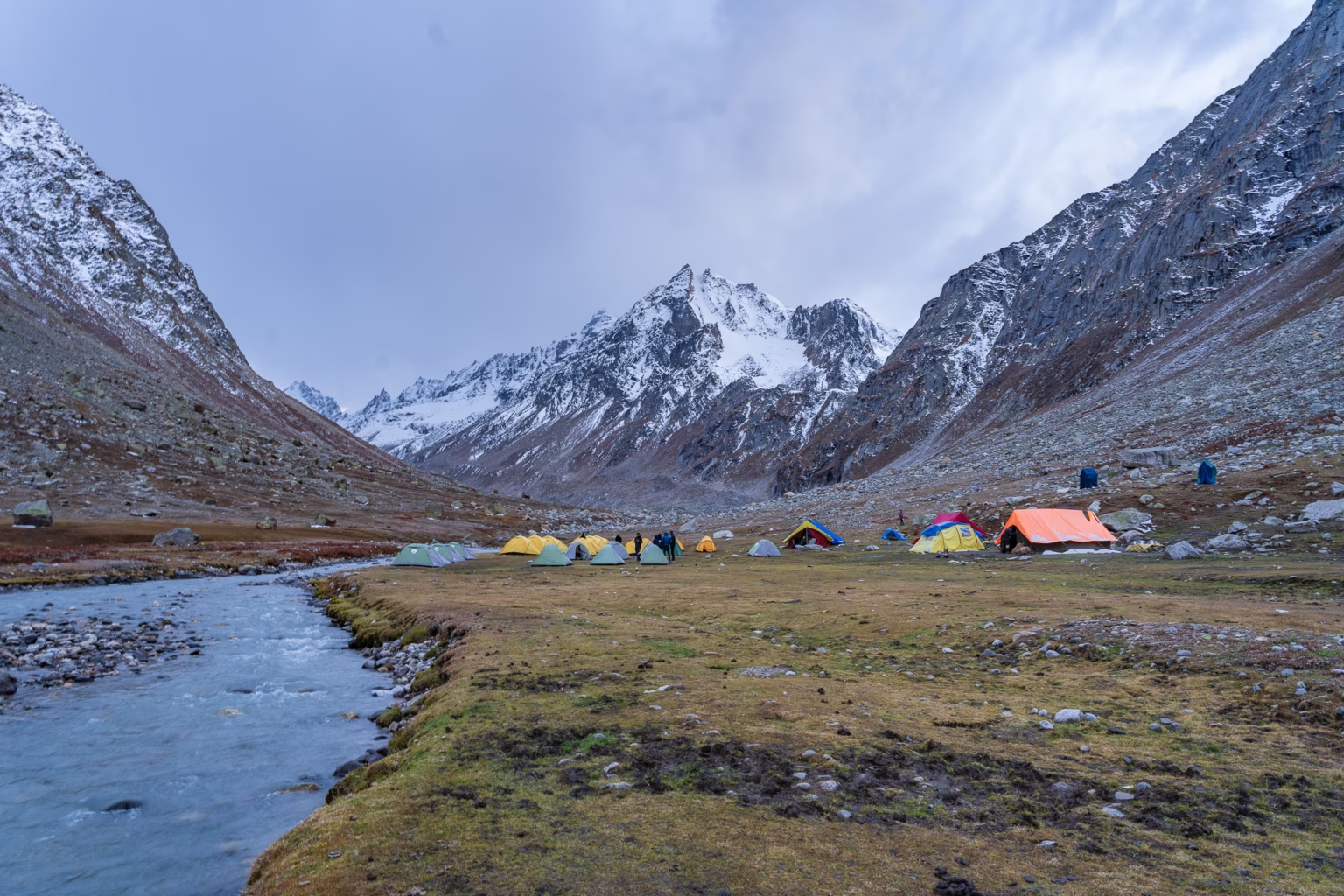
Hampta Pass Trek: A Gateway to Himalayan Wonders
Nestled in the Pir Panjal range of Himachal Pradesh, the Hampta Pass trek stands out for its incredible diversity. Throughout 4 to 5 days, you witness a dramatic shift in landscapes unparalleled in many other treks of similar duration. Starting from the lush, verdant Kullu Valley, with its dense forests, cascading waterfalls, and vibrant meadows, you ascend to the stark, lunar landscapes of the Lahaul Valley. This transition, from the abundant greenery on one side to the barren, raw beauty of the other, is a hallmark of the Hampta Pass and a constant source of awe for trekkers.
My Journey to Hampta Pass: A Quest for Beauty and Challenge
My decision to embark on the Hampta Pass trek stemmed from a profound desire to immerse myself in the raw, untamed splendour of the Himalayas. I had long been captivated by tales of its dramatic landscapes – the seamless transition from vibrant, lush green valleys to majestic, snow-capped peaks and sweeping vistas. Beyond the sheer visual appeal, I was drawn to the region's rich tapestry of culture and history, believing it would add another layer of depth to the adventure.
As an enthusiastic trekker, I'm always on the lookout for a fresh test of willpower and physical prowess. Hampta Pass, with its reputation for rugged terrain and significant high altitude, presented the perfect arena to push my boundaries. And indeed, it did not disappoint. The trek was undeniably demanding, yet the sense of accomplishment upon reaching the summit was immensely rewarding. It was a truly transformative experience, allowing me to reconnect with the natural world and explore the depths of my own mental and physical resilience.
Planning My Hampta Pass Expedition
Now, for the practicalities of making this dream a reality. You'll find a variety of Hampta Pass trek packages available, offering diverse itineraries to suit different preferences and fitness levels. For me, October proved to be the ideal time, offering what I consider the best conditions to visit Hampta Pass. My journey began in Delhi, followed by an overnight, 15-hour bus ride to reach the bustling town of Manali.
Reaching the Hampta Pass Base Camp from Manali
Curious about how to get to the starting point? Reaching the Hampta Pass base camp from Manali is quite straightforward, with various transport options available, including by car. The drive is a short one, spanning a mere 15 kilometres to Prini, the designated assembly point for trekkers. Upon arrival, I rendezvoused with my trekking group, a lively cohort of 40 adventurers. It's worth noting that during the peak summer season, these trekking groups typically range from 40 to 45 participants per batch, with treks organised over a roughly 20-day window. This means you'll find a new group arriving at each campsite every day during this period.
To make the most of your adventure, remember to pack smartly and travel light. Prioritise your fitness level well in advance, and, most crucially, remember to carry any personal medications. As you prepare for the Hampta Pass trek, it's wise to anticipate the difficulties and challenges you might encounter along the way, ensuring you're mentally and physically ready for the journey ahead.
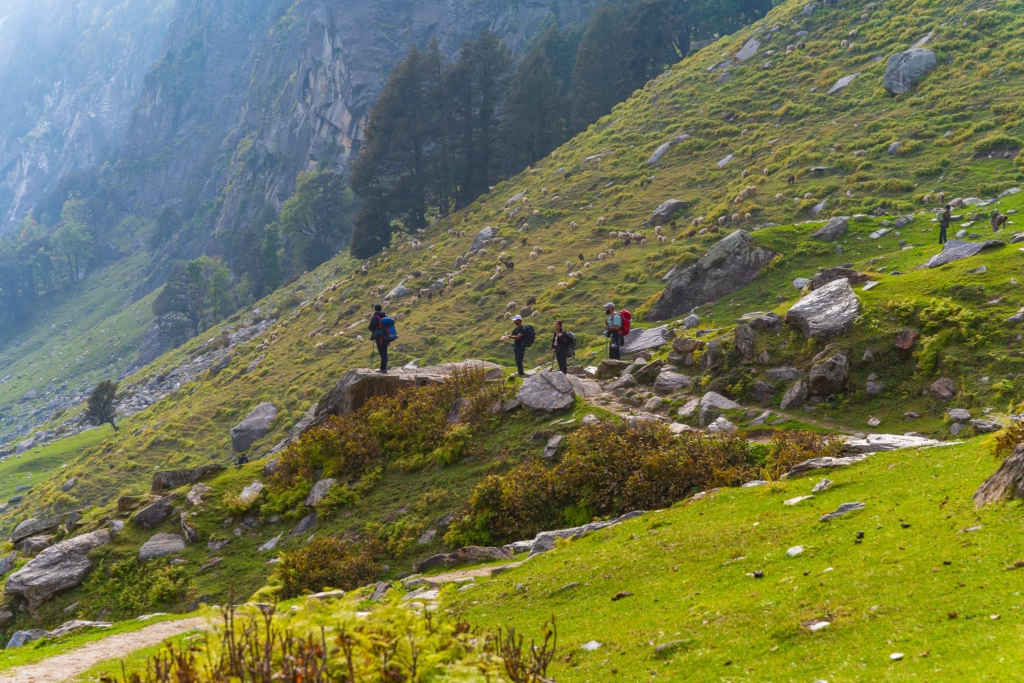
Quick Itinerary For Hampta Tour Package
DAY 1: Drive from Manali to Jobra and Trek to Chika
- Reporting Point: Old Manali (09:00 AM – 10:00 AM)
- Altitude: 9,800 ft to 10,100 ft.
- Drive for 2 hours to Jobra. Then, a short trek through pine, maple, and birch forests along the Rani River to Chika.
- Overnight Stay: Camping at Chika
DAY 2: Trek from Chika to Balu ka Ghera
- Trek along Rani Nallah with views of the Dhauladhar range
- Cross meadows, rocks, and alpine flowers
- Reach the wide-open campsite, Balu Ka Ghera
- Overnight stay in Balu Ka Ghera
DAY 3: Trek from Balu ka Ghera to Siagoru via Hampta Pass Summit
- Steep trek to Hampta Pass (14,100 ft) – toughest yet most rewarding day
- Enjoy stunning views of valleys, glaciers & peaks at the summit
- Descend into Lahaul Valley and reach the Siagoru campsite
- Overnight Stay in Siagoru
DAY 4: Trek from Siagoru to Chatru & Drive to Chandra Tal
- Trek to Chatru, a junction of Spiti, Lahaul & Kullu valleys
- Post-lunch drive to Chandratal Lake (subject to road conditions)
- Return to the Chatru campsite for a night's stay
DAY 5: Drive from Chatru to Manali
- Scenic return drive via Rohtang Pass or Atal Tunnel
- Witness changing landscapes from Spiti to Kullu Valley
- Arrive in Manali by morning/early afternoon
The Gentle Ascent: A Beginner-Friendly Gradient
One of the primary reasons Hampta Pass is so well-suited for beginners is its thoughtfully designed ascent. Unlike some high-altitude treks that involve rapid and steep climbs, Hampta Pass offers a gradual elevation gain. You typically start from Jobra (around 9,800 ft) and make your way to Chika (10,100 ft) on the first day, gradually acclimatising your body. The highest point, Hampta Pass itself, stands at approximately 14,100 feet. This progressive increase in altitude allows your body ample time to adjust to the thinner air, significantly reducing the risk of Acute Mountain Sickness (AMS).
Experienced guides leading these treks are well-versed in maintaining a steady, comfortable pace, ensuring that even those with limited prior trekking experience can keep up without feeling overwhelmed. This "slow and steady wins the race" approach is crucial for high-altitude environments and makes the Hampta Pass experience far more enjoyable and safe for novices.
"Click here to read our full story on conquering the Hampta Pass Trek — nature, thrill, and transformation!"
Manageable Duration and Distance: A Taste, Not an Overdose
Clocking in at around 4 to 5 days, covering approximately 26-30 kilometres, the Hampta Pass trek strikes a perfect balance. It's long enough to provide a genuine Himalayan trekking experience, allowing you to immerse yourself in the wilderness, but not so long that it becomes physically or mentally exhausting for a beginner. Daily trekking hours typically range from 4 to 8 hours, depending on the terrain and the group's pace. This manageable duration means you can easily fit it into a standard vacation, without requiring an extensive commitment of time or energy. It's an ideal "first taste" of high-altitude adventure, leaving you invigorated rather than burnt out.
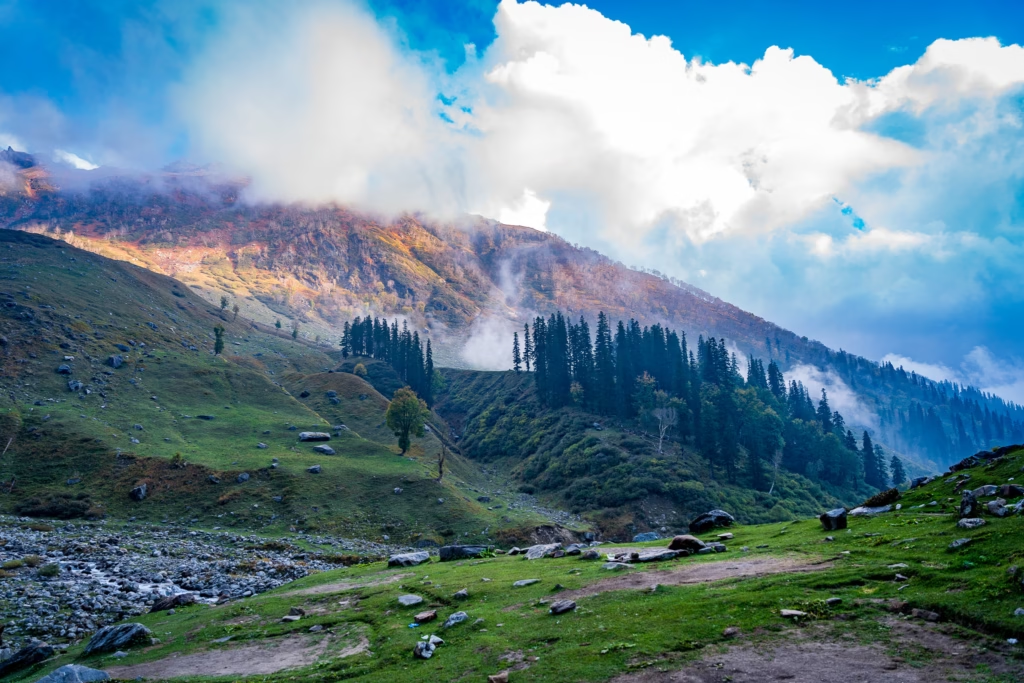
Diverse Terrain: A Comprehensive Himalayan Introduction
Imagine trekking through a different landscape each day. Hampta Pass delivers exactly that, offering a mini-masterclass in Himalayan topography. You'll navigate through:
-
Lush Forests and Meadows: The initial days on the Kullu side are a treat for the senses, with dense pine, birch, and oak forests, and vast green meadows carpeted with wildflowers.
-
River Crossings: The trek involves several thrilling river crossings, some over makeshift bridges and others requiring a careful wade through icy glacial waters. These add an element of adventure and require good balance and appropriate footwear.
-
Rocky Patches and Bouldered Sections: As you ascend towards the pass and descend into Lahaul, the terrain becomes rockier, with scree and boulders. This challenges your foot placement and agility, preparing you for more rugged trails in the future.
-
Snow Patches: Even in the summer months, especially in early season (June-July), you're likely to encounter snow patches, particularly near the pass. This offers a thrilling experience of walking on snow and ice, often with the assistance of microspikes provided by your trekking agency.
This varied terrain ensures that beginners are exposed to different challenges without any one section being overly technical or dangerous. It’s an excellent training ground for developing essential trekking skills.
The Reward: Chandratal Lake – A Jewel in the Himalayas
While the Hampta Pass crossover itself is a phenomenal achievement, most Hampta Pass treks culminate with an optional but highly recommended visit to the stunning Chandratal Lake. This crescent-shaped alpine lake, often called the "Moon Lake," is a spectacle of vibrant blue waters nestled amidst barren mountains. The drive to Chandratal from Chatru (the end point of the Hampta Pass trek) is an adventure in itself, traversing rough roads through the mesmerising Spiti Valley. Spending an evening and witnessing the lake's changing hues at different times of the day is a truly magical experience and a fitting grand finale to your first high-altitude adventure.
Preparing for Your Hampta Pass Adventure:
While Hampta Pass is beginner-friendly, it's not a walk in the park. A reasonable level of physical fitness is essential to enjoy the trek comfortably and minimise the risk of injury or altitude sickness. Here’s how you can prepare:
-
Cardiovascular Endurance: Start a fitness regimen at least 4-6 weeks before your trek. Regular brisk walking, jogging, cycling, or swimming for 30-45 minutes, 4-5 times a week, will significantly improve your stamina. Aim to be able to jog 5 km in 36 minutes.
-
Strength Training: Focus on strengthening your legs and core muscles. Squats, lunges, planks, and step-ups will be beneficial for tackling ascents and descents with a backpack.
-
Practice Hikes: If possible, do a few short day hikes with a light backpack to get accustomed to walking on uneven terrain.
-
Hydration: Start hydrating well in the days leading up to your trek and continue to drink plenty of water throughout the journey.
-
Proper Gear: Invest in good quality, waterproof trekking shoes with ankle support that are well broken in. Layered clothing, a waterproof jacket and pants, warm hat, gloves, and a comfortable backpack are essential. Trekking poles are highly recommended for stability and reducing strain on your knees.
-
Listen to Your Body: Pay attention to any symptoms of altitude sickness (headache, dizziness, nausea). Inform your guide immediately if you feel unwell. Walk at your own comfortable pace and don't push yourself too hard.
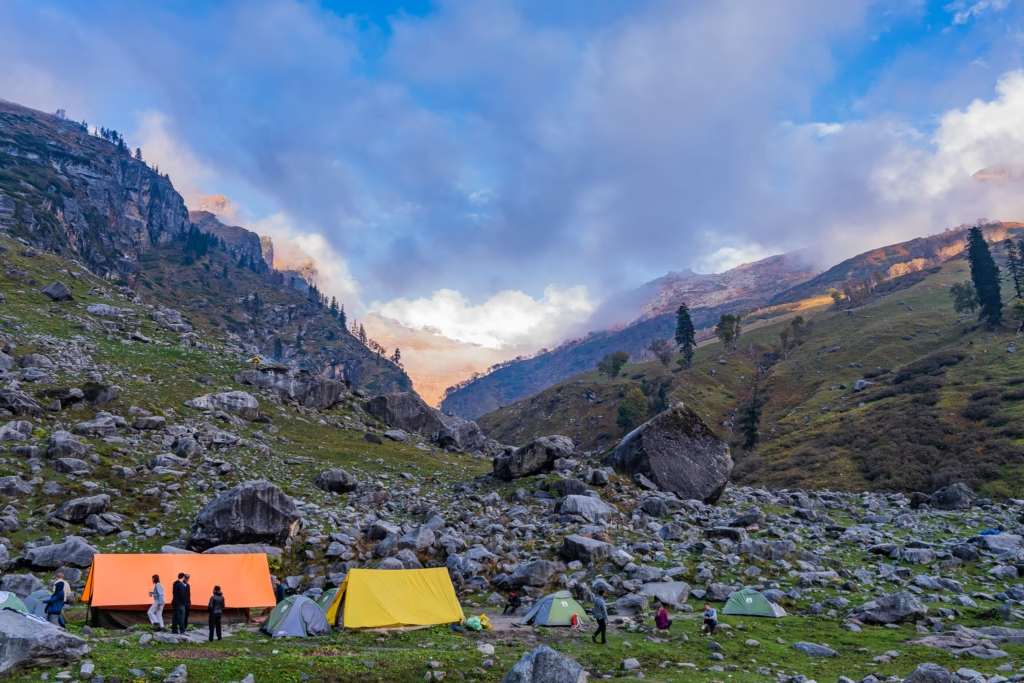
Beyond the Scenery: A Journey of Self-Discovery
Beyond the breathtaking vistas and physical challenge, the Hampta Pass trek offers a profound journey of self-discovery. Disconnecting from the digital world and immersing yourself in nature allows for introspection and a renewed appreciation for simplicity. The camaraderie with fellow trekkers, sharing challenges and triumphs, often forges lasting friendships. Overcoming the physical demands of the trek instils a sense of accomplishment and boosts confidence. It’s an experience that transcends mere tourism, offering lessons in resilience, adaptability, and the sheer power of the human spirit.
Trekking Essentials for Hampta Pass Trek
Its mesmerising, beautiful scenery and serene environment make the Hampta Pass trek a favourite site to explore for many tourists. But just like many treks, it is very important to thoroughly prepare. Ensuring you have your trekking essentials is fundamental for having a good experience during the trek. Below is a list of items that I suggest you pack and take with you on the trek:
1. Clothing: With the landscape changing and many people having different preferences, be sure to bring a base moisture-wicking layer, insulation mid-layers such as fleece or wool, and waterproof layers such as windbreakers(jackets) and rain pants. Sweater, ski pants, and a warm jacket for the night.
2. Footwear: Since the terrain varies from rocky to snow-topped areas, it would be advisable to wear trekking boots that are waterproof and sturdy with good grip and ankle support.
3. Backpack: Putting on a medium rain cover on your bag will protect your bag (40l-50l) from the rain while allowing you to pack the essentials you need.
4. Sleeping Bag: Sleeping bags that have a rating of zero degrees to five degrees would be advisable as huddling close into one would provide a comforting warmth in cold high altitude places.
5. Trekking Poles: Using poles would take a lot of load off your knees, keeping balance and providing stability during steep climbs.
6. Hydration & Snacks: Pack a reusable, composed water bottle with nourishing snacks that would replenish your energ,y such as dry fruits, energy bars, and nuts.
7. Medications: Pain relieving medication, a few antiseptic ointments, statin.
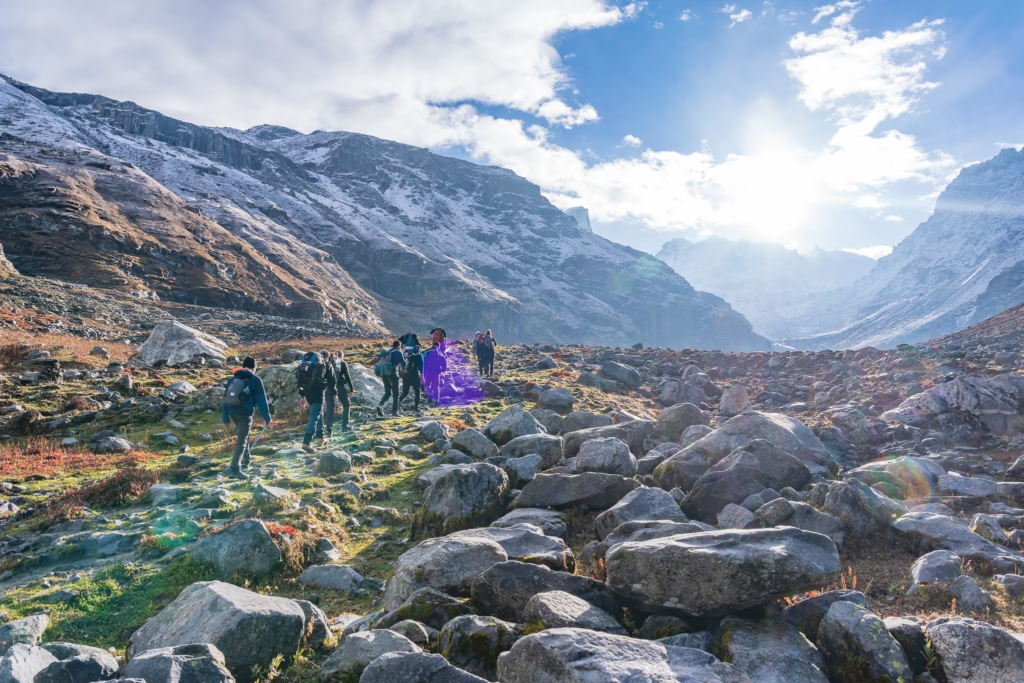
Challenges and Tips for Conquering the Hampta Pass Trek
Embarking on the Hampta Pass trek is an exhilarating experience, but like any high-altitude adventure, it comes with its unique set of challenges. Being prepared and understanding how to navigate these obstacles will ensure a safer and more enjoyable journey.
1. The Altitude Ascent: A Test of Acclimatisation
Reaching an impressive 14,100 feet, the summit of Hampta Pass demands respect for its altitude. Without proper acclimatisation, trekkers risk succumbing to altitude sickness. This isn't a race; it's a marathon where your body needs time to adjust.
Tip for Success: The trek's itinerary is designed with gradual ascents and strategic breaks at campsites, providing your body with essential time to adapt to the thinning air. The key is to move at a steady, comfortable pace, avoiding overexertion. Furthermore, maintaining consistent hydration by drinking plenty of water throughout the trek is paramount in warding off the effects of altitude sickness. Think of each sip as an aid to your body's vital acclimatisation process.
2. Unpredictable Himalayan Weather: Be Prepared for Anything
The weather on the Hampta Pass trek is notoriously fickle and unpredictable. One moment you might be basking under clear blue skies, and the next, a sudden downpour or even snowfall can sweep in, especially at higher elevations. This volatility can significantly increase the trek's difficulty, turning trails hazardous, particularly during the monsoon season (June to September).
Tip for Success: Always check the latest weather forecasts before you set out. More importantly, invest in high-quality, appropriate gear. A waterproof and windproof jacket, reliable trekking boots with good grip, and a rain cover for your backpack are non-negotiable essentials. Layering your clothing will allow you to adapt quickly to changing conditions. Don't let inadequate gear dampen your spirits or jeopardise your safety.
3. Diverse and Demanding Terrain: Navigating Nature's Obstacles
The Hampta Pass trek presents a variety of challenging geographical terrains that require both physical strength and careful footwork. You'll encounter steep ascents, navigate through snow patches, and traverse rocky paths. These sections demand precise balance and placement, especially during descents or when crossing icy streams.
Tip for Success: Enhance your stability and reduce strain on your joints by utilizing trekking poles. Wear ankle-supporting boots to prevent twists and sprains on uneven ground. When facing tricky sections, resist the urge to rush. Instead, take small, deliberate, and consistent steps. Focus on your foot placement and trust your balance. This measured approach will help you navigate even the most challenging parts of the trail with confidence.
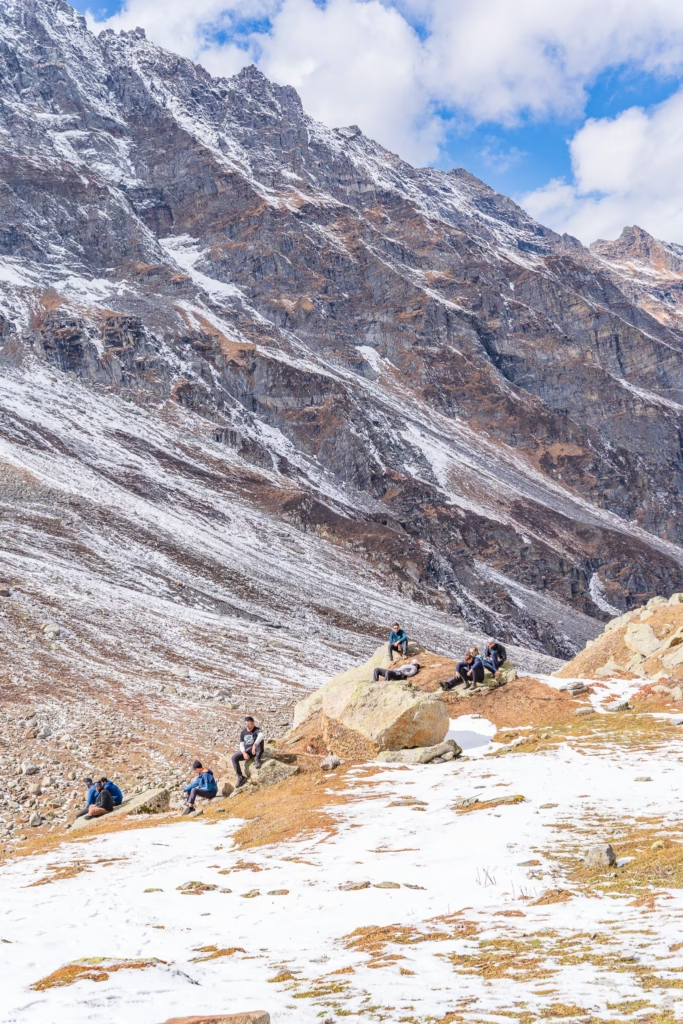
Why choose Tourmyholiday for the Hampta Pass trek
1. Comprehensive Itinerary & Chandratal Lake Inclusion: Many Hampta Pass treks are available, but "TourMyHoliday" often includes the mesmerising Chandratal Lake as a highlight. This adds immense value, transforming the trek from a simple pass crossing into a more complete journey through diverse Himalayan landscapes, culminating in the serene beauty of the "Moon Lake." Their itineraries are typically well-structured, covering the Manali to Jobra drive, progressive daily treks, and the breathtaking views from the pass.
2. Focus on Safety and Support: For a high-altitude trek, safety is non-negotiable, especially for beginners. TourMyHoliday emphasizes providing experienced guides and a dedicated support staff. This means you'll have knowledgeable professionals leading the way, assisting with challenging sections, and ensuring proper acclimatization. They generally provide basic first-aid, ensuring that you're in capable hands should any minor issues arise. This level of support allows you to focus on enjoying the trek rather than worrying about logistics or potential hazards.
3. Well-Organised Logistics: From the initial pick-up in Manali to setting up comfortable campsites each night, a good trekking operator takes care of all the finer details. TourMyHoliday typically handles transport to the base camp, provides all necessary permits, and sets up equipped campsites with nourishing meals. This streamlines the entire experience, allowing you to simply show up and immerse yourself in the journey without the stress of planning and execution.
4. Tailored for Various Trekkers: While Hampta Pass is often recommended for beginners, TourMyHoliday aims to cater to a range of fitness levels. Their itineraries are designed to allow for gradual acclimatisation, making it accessible even if you're relatively new to high-altitude trekking. They also offer options that might appeal to more seasoned trekkers looking for a well-supported, scenic experience.
5. Customer-Centric Approach (Based on general feedback for similar companies): While specific reviews for "TourMyHoliday" on Hampta Pass aren't extensively indexed in general search results, reputable trekking companies like theirs often prioritise customer satisfaction. This typically translates to clear communication pre-trek, responsive support during the journey, and a focus on creating memorable experiences. Look for testimonials or direct communication with their team to gauge their commitment to client happiness.
6. Value Proposition: Trekking packages often bundle various services like guides, meals, camping gear, and permits into one cost. Companies like Tour My Holiday aim to provide a competitive package that offers good value for the comprehensive services and the unforgettable experience they deliver on the Hampta Pass.
"If you’re someone who dreams of exploring more thrilling Himalayan treks like Hampta Pass, then don’t stop here — visit our official website TourMyHoliday and discover dozens of handpicked trekking and travel packages crafted just for adventure lovers!"

Places covered near Hampta Pass
The Hampta Pass trek offers an incredible journey between the lush Kullu Valley and the stark Lahaul Valley. While the trek itself is the main attraction, there are many stunning places you can explore nearby, either before or after your trek. These places offer a mix of natural beauty, cultural insights, and adventure activities.
I. Places in Kullu Valley (Manali and surrounding areas - before the trek):
Since Manali is the usual starting point for the Hampta Pass trek, you'll likely spend some time here.
-
Manali Town:
-
Old Manali: A charming, laid-back area with a distinct bohemian vibe, popular with backpackers. Explore its quaint cafes, guesthouses, and local markets.
-
Hadimba Devi Temple: An ancient wooden temple dedicated to Goddess Hidimba, set amidst a dense cedar forest. Its unique pagoda-style architecture is fascinating.
-
Manu Temple: Located in Old Manali, this temple is dedicated to Sage Manu, believed to be the creator of humanity according to Hindu mythology.
-
Vashisht Village & Hot Springs: A short distance from Manali, Vashisht is known for its natural hot sulfur springs, believed to have medicinal properties. There are also ancient temples dedicated to Vashisht Muni and Lord Rama.
-
Mall Road, Manali: The bustling heart of Manali, offering a variety of shops, restaurants, and hotels.
-
Manali Wildlife Sanctuary: A protected area showcasing the region's biodiversity, perfect for nature enthusiasts.
-
-
Beyond Manali (closer to the trek's starting point):
-
Solang Valley: A popular adventure hub, offering activities like paragliding, zorbing, and horse riding in summer, and skiing/snowboarding in winter. It's a great place for some pre-trek fun.
-
Jobra: This is the road head and initial base camp for the Hampta Pass trek. It's a picturesque spot with a mixed forest of pine, maple, and birch trees, and the Rani Nallah flowing through it. You'll spend your first moments of the trek here.
-
Sethan Village: A tranquil village on the way to Jobra, offering stunning views and a peaceful escape. It's also known for its igloo stays in winter.
-
Naggar Castle: A historic medieval castle, now converted into a heritage hotel, offering a glimpse into Kullu's royal history and panoramic views of the valley. It's a short drive from Manali.
-
Gulaba: A beautiful spot on the way to Rohtang Pass, often used as an alternative gateway to the Beas Kund trek. It offers scenic views and is a popular picnic spot.
-
Bhrigu Lake: If you have an extra day and are looking for another high-altitude adventure, the Bhrigu Lake trek is a popular option from Gulaba, known for its stunning alpine meadows.
-
II. Places in Lahaul Valley (after crossing Hampta Pass):
The Hampta Pass trek drops you into the Lahaul Valley, a stark contrast to the Kullu side.
-
Chandratal Lake: This is the most significant and often included extension to the Hampta Pass trek. Located in the Spiti Valley region (though accessible from Lahaul), this crescent-shaped alpine lake is renowned for its mesmerising blue waters and otherworldly charm. It's a truly spectacular reward after the trek.
-
Chatru: The typical ending point of the Hampta Pass trek. It's a small settlement and campsite where the Hampta, Spiti, and Rohtang Pass roads converge. It's the point from where you'd typically drive to Chandratal or back to Manali.
-
Sissu: A beautiful village located on the banks of the Chandra River, known for its impressive waterfall and lush green fields (in contrast to other parts of Lahaul). The newly opened Atal Tunnel has made Sissu much more accessible.
-
Keylong: The district headquarters of Lahaul and Spiti. It's a larger town with basic amenities, monasteries (like Kardang Monastery), and provides a good base for exploring the Lahaul Valley.
-
Koksar: The first major village you encounter in Lahaul after crossing Rohtang Pass (if approaching from that side). It's a small village with a few dhabas.
-
Deepak Tal & Suraj Tal: These are two beautiful high-altitude lakes located on the Leh-Manali Highway in Lahaul. Suraj Tal is the source of the Bhaga River.
-
Gondla is known for its historic seven-story fort (Gondla Fort), offering a glimpse into the region's past.

III. High Mountain Passes (often traversed to reach Hampta Pass or return):
-
Rohtang Pass: Historically, Rohtang Pass was the main gateway connecting Kullu Valley to Lahaul and Spiti. While the Atal Tunnel has made travel easier, Rohtang still offers stunning views (when open) and is a popular tourist destination. You'll likely drive through or near it on your return journey to Manali from Chatru.
-
Kunzum Pass (Kunzum La): This high-altitude pass connects the Lahaul Valley with the Spiti Valley. It's a common route to reach Chandratal Lake if you're coming from the Spiti side or continuing further into Spiti.
Many Hampta Pass trek itineraries include the drive back from Chatru to Manali via the Atal Tunnel and often make a stop at Chandratal Lake. These additional places truly enrich the overall Himalayan experience.
Summary
To sum up, the Hampta Pass trek allows the trekkers to explore the different terrains ranging from green valleys to dry deserts. It’s a trek that offers stunning views and an exciting experience with crossing the Hampta Pass at a height of 14100 ft. However, as is the case with any high-altitude trek, it requires some amount of planning and care in terms of monitoring the weather, altitude, and physical health condition of the individual.
To get the best out of the Hampta Pass trek, it is important to get the right advice and pack the appropriate equipment, as well as adhere to a few suggestions that may guarantee a successful trip. For those interested in a more specific approach, Himalayan Daredevils have a great offer of fully organised treks led by professional mountain guides, ensuring your safety whilst fully enjoying the possibilities this great trek has to offer. It does not matter if you are an experienced trekker or this is your first time, their assistance will only enhance your experience and make it unforgettable.
"Check out this informative Guide on the Hampta Pass Trek by Thrillophilia — one of the most trusted travel platforms in India."
FAQs Hampta Pass
1. What is the Hampta Pass trek and where is it located? The Hampta Pass is a high-altitude mountain pass located in the Pir Panjal range of the Himalayas in Himachal Pradesh, India. The trek is a cross-over trail, connecting the lush Kullu Valley with the stark, semi-arid Lahaul Valley.
2. What is the maximum altitude of the Hampta Pass trek? The Hampta Pass itself is situated at an approximate altitude of 14,100 feet (4,297 meters) above sea level.
3. How difficult is the Hampta Pass trek, and is it suitable for beginners? The Hampta Pass trek is generally classified as easy to moderate. It's widely considered an excellent high-altitude trek for beginners with a reasonable level of physical fitness. While there are steep sections and river crossings, it doesn't involve technical climbing, and the gradient is mostly gradual, aiding acclimatisation.
4. How many days does the Hampta Pass trek usually take? The Hampta Pass trek typically takes 4 to 5 days to complete. If you include the drive to Chandratal Lake, the overall trip usually extends to 5 to 6 days.
5. What is the best time to do the Hampta Pass trek? The best time to trek Hampta Pass is from mid-June to early October.
-
June to July: You'll encounter significant snow patches, especially near the pass, offering a thrilling snow-trekking experience.
- August to September: The landscape is lush green with wildflowers, and river crossings can be more challenging due to monsoon-fed streams.
-
Late September to early October: The monsoon has usually receded, offering clearer views, stable trails, and pleasant weather, though the greenery might have faded.
6. What are the typical weather conditions during the trek? Weather in the Himalayas is unpredictable. During the day, temperatures can range from 12°C to 18°C, while nights can drop significantly, often between 0°C and 4°C, or even below freezing at higher campsites. Be prepared for sudden changes, including rain and even snow.
7. How should I prepare physically for the Hampta Pass trek? A good level of fitness is crucial. Start a fitness regimen at least 4-6 weeks prior, focusing on:
-
Cardiovascular endurance: Brisk walking, jogging, cycling, or swimming for 30-45 minutes, 4-5 times a week. Aim to be able to jog 5 km in 35-40 minutes.
- Strength training: Focus on leg and core exercises like squats, lunges, and planks.
-
Practice hikes: If possible, do some short hikes with a backpack to get used to walking on uneven terrain.
8. What essential gear should I pack for the Hampta Pass trek?
- Trekking shoes: Waterproof with good ankle support and grip (no sports shoes).
- Layered clothing: Base layers, fleece jackets, a warm padded jacket (down or synthetic).
-
Waterproof outer shell: Jacket and pants to protect against rain and snow.
-
Warm hat, gloves, and neck gaiter.
-
Socks: 3-4 pairs of moisture-wicking trekking socks, plus a pair of woollen socks for evenings.
-
Headlamp/torch with extra batteries.
-
Sun protection: Sunscreen (high SPF), sunglasses, and a wide-brimmed hat.
- Trekking poles: Highly recommended for stability and reducing strain.
-
Personal first-aid kit and essential medications.
-
Water bottle/hydration pack.
- Small daypack for essentials, and a larger backpack for your main luggage.
9. How can I prevent altitude sickness (AMS) on the trek?
-
Acclimatise properly: The trek itinerary is designed with gradual ascents.
-
Go slow: Walk at a comfortable pace and don't overexert yourself.
-
Stay hydrated: Drink plenty of water throughout the day.
-
Avoid alcohol, smoking, and caffeine.
-
Eat nutritious food.
-
Listen to your body: Report any symptoms (headache, nausea, dizziness) to your guide immediately. Your guide may carry basic medicines like Diamox, but consult your doctor beforehand.
10. Is a mobile network available on the Hampta Pass trek? No, mobile network connectivity is generally very poor to non-existent once you leave Manali/Prini. You might get intermittent signals near the Rohtang Pass on your return journey. Trekking groups often use walkie-talkies for communication among staff. Inform your family and friends about the limited connectivity before you start the trek.
11. What are the toilet facilities like on the trek? Toilet facilities at campsites are typically tent-based dry pit toilets. These are basic setups with a pit dug in the ground and a toilet seat placed over it, enclosed by a privacy tent. It's essential to carry your own toilet paper and hand sanitiser. Trekkers are usually instructed on proper disposal to maintain hygiene and environmental sanctity.
12. Are there any age restrictions for the Hampta Pass trek? While there's no strict upper age limit for Hampta Pass, participants should be in good physical and mental health. Some operators may require a medical certificate for trekkers above 58-60 years of age. Generally, it's recommended for individuals aged 12 years and above, with minors usually requiring adult accompaniment.
13. What is the typical cost of the Hampta Pass trek package? The cost of a Hampta Pass trek package can vary widely depending on the operator, duration (with or without Chandratal), inclusions (food, accommodation, guide, transportation from Manali, etc.), and group size. Generally, prices can range from ₹7,000 to ₹15,000 per person for a standard 4-5 day trek from Manali to Manali.
14. Are permits required for the Hampta Pass trek? Yes, permits are required to trek in the Hampta Pass region. Reputable trekking agencies usually handle all necessary permits on your behalf, so you don't need to worry about the process.
15. How does Hampta Pass compare to other beginner treks like Beas Kund? Hampta Pass is generally considered more diverse and slightly more challenging than Beas Kund. Hampta offers a dramatic landscape change (Kullu lushness to Lahaul barrenness) and often involves walking on snow. Beas Kund is a shorter trek, leading to the source of the Beas River, known for its picturesque meadows and relatively less steep climbs. Both are excellent options for beginners, but Hampta offers a more expansive Himalayan experience.
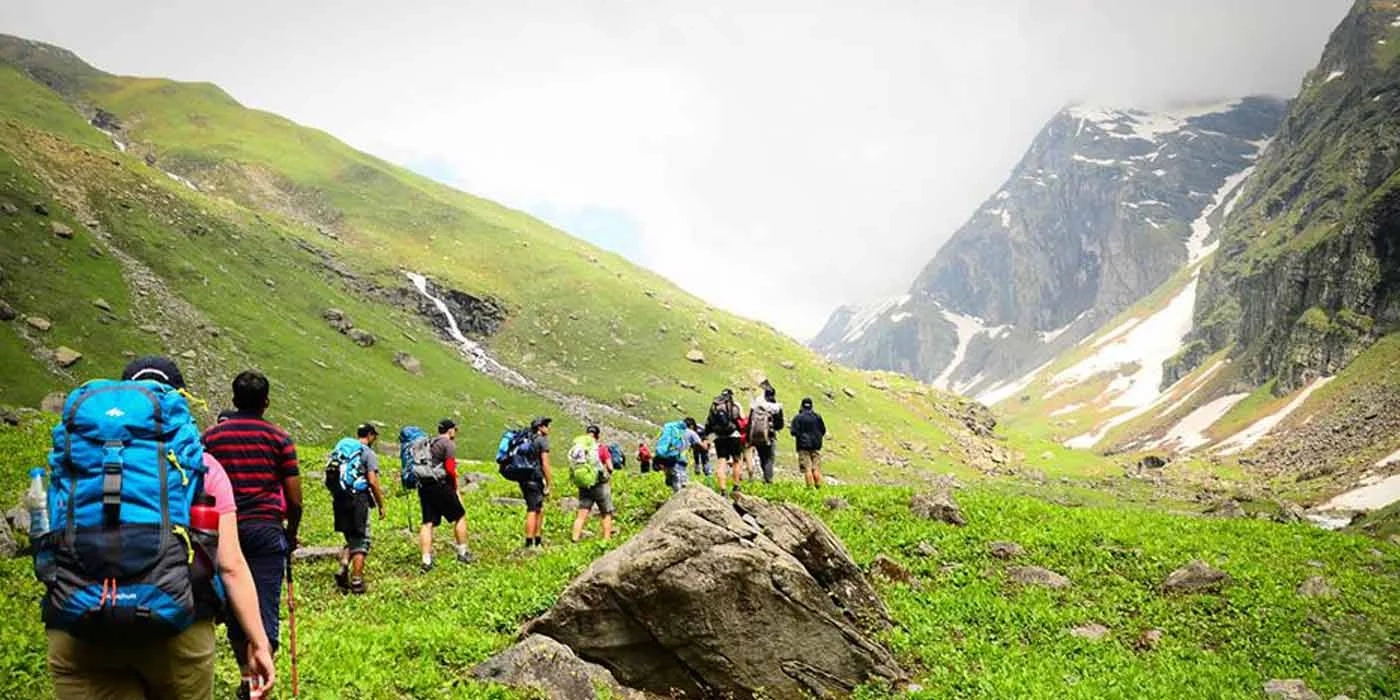

.jpg)
